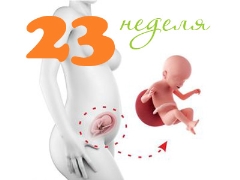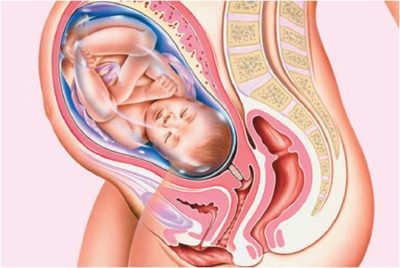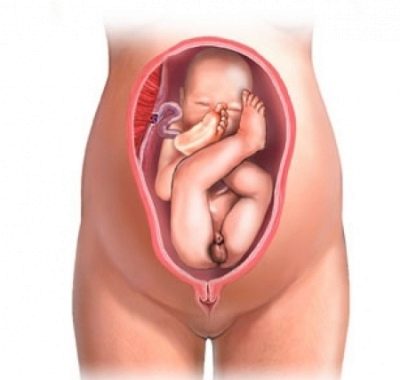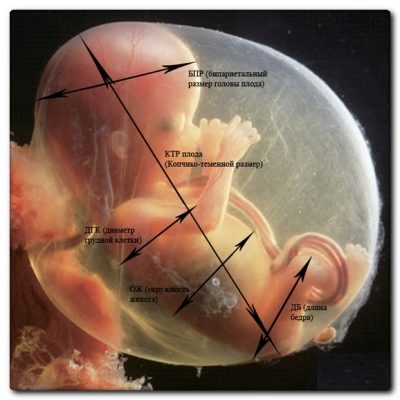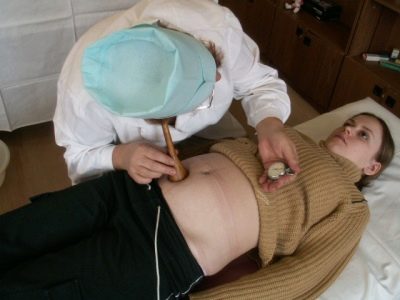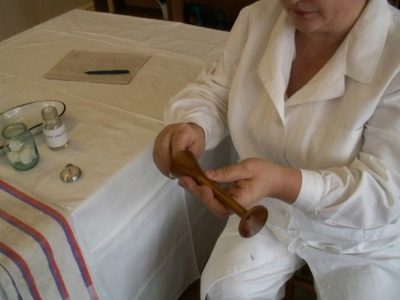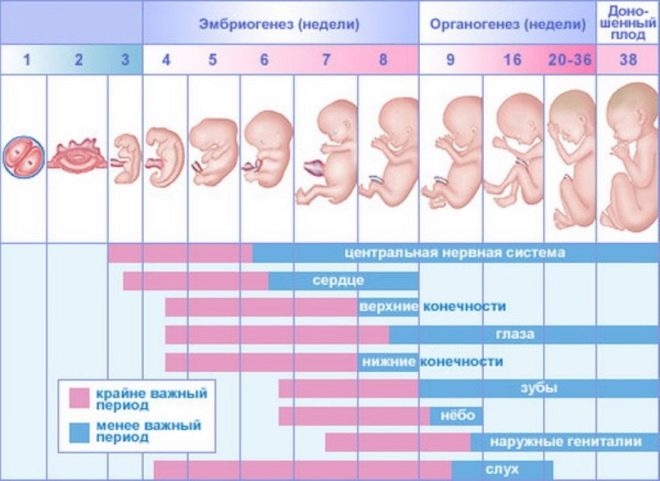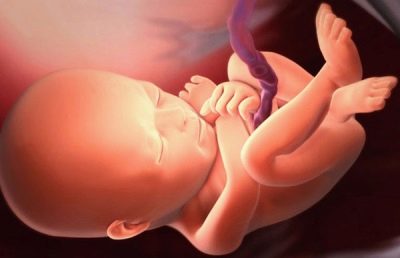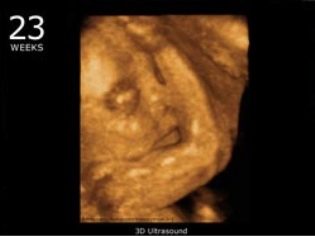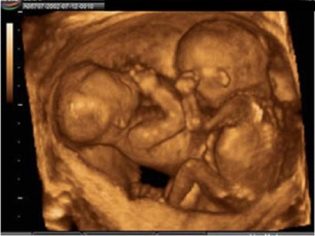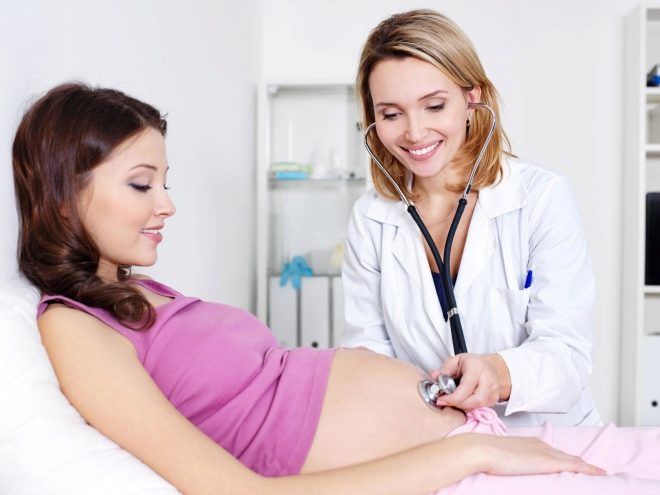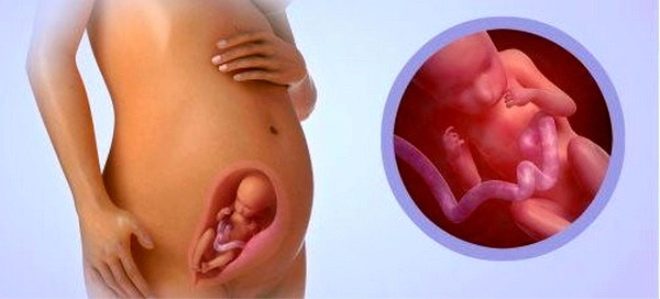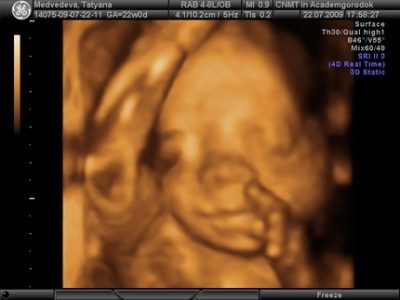Fetal development at 23 weeks gestation
At week 23 of fetal life, quite a lot of different transformations occur in the fetus.
Location in the womb
The baby may be located in the womb in different ways. The location of the child is a very important parameter, which doctors must determine. They carry out such determination even several times during the entire period of pregnancy. The fact is that the initial arrangement of the baby in the uterus may change several times before delivery. If the baby is fidget and for some reason has a lot and is actively moving, then its position in the uterus may change.
Headache presentation is the most physiologically optimal. In this case, the head of the baby is located towards the entrance to the pelvis of his mother. With this arrangement, the fetus during natural childbirth, as a rule, proceeds quite favorably. Dangerous birth injuries or various injuries in this position are quite rare.
A less favorable option for the location of the baby in the womb is pelvic presentation. In this position, it is not the head of the fetus, but its pelvis that is turned first towards the birth canal. In this case, the process of natural childbirth can be dangerous by the development of a number of generic pathologies.
Most likely, if the position of the fetus does not change before the birth, then the doctor during pelvic presentation of the baby will offer his mother to give birth with a caesarean section.
The less favorable location of the fetus in the uterus is also dangerous by the development of a number of pathologies even during the course of pregnancy. A pregnant woman who knows that her baby is in pelvic presentation should be especially careful about her health. If she noticed a leak in her amniotic fluid or severe cramping abdominal pain, she should immediately seek medical help.
Body parameters
In order to determine the main dimensions of the body of the fetus, doctors resort to a special method of ultrasound. It is called fetometry. During this examination, an ultrasound specialist using an ultrasonic sensor examines the main internal organs and structures of the baby, making mandatory measurements.
For each period of pregnancy there are certain limits of normal values of the determined clinical parameters. The most important parameters studied are the weight and height of the baby. The rates of these clinical indicators are presented in the table below:
Investigated Criterion | Norm |
Growth | 28-32 cm |
Weight | 350-510 grams |
With multiple pregnancies, babies are slightly different in size. It often happens that one of the children is growing somewhat faster and more intense than the other. This contributes to the fact that one brother or sister weighs more than another. This feature is quite physiological and quite often occurs in multiple pregnancies.
A very important criterion for assessing fetal development is the calculation of his heart rate (HR).The baby's heartbeat at 22-23 obstetric week of pregnancy, doctors determine not only during the ultrasound examination, but also with the help of a normal obstetric stethoscope.
To calculate the heart rate, the doctor chooses the best auscultation site. This is a definite point on the “pregnant” tummy, where the baby’s heart tones are heard more easily. Heart rate is an important marker of how fetal development occurs. Normal fetal heart rate values are listed in the table below:
Heart rate | Heart rate |
Heart rate | 140-160 beats per minute |
The 23 week of pregnancy is accompanied by characteristic manifestations in the work of all fetal nerve analyzers. The development of the nervous system of the baby every day of the second trimester is very active.
Feelings of the fetus
By this time of pregnancy, the baby’s brain weighs about 80 to 90 grams. In the cortex increases the number of convolutions and furrows. Such changes contribute to the fact that the behavior of the baby becomes more orderly and complex.
For an active cognition of the outside world, the baby must have well developed nervous analyzers. They are also called the senses. Through such analyzers, the baby can recognize different sounds, respond to bright light and intense smells, as well as taste.
The child perceives different tastes when ingesting the amniotic fluid. The chemical composition of the amniotic fluid may be different and depends largely on the daily diet of the expectant mother. So, the amniotic fluid is most often sweet or salty.
If the amniotic fluid is swallowed, an intensive development of the urinary system occurs. During the day, the fetus is already able to swallow about 400-500 ml of liquid. It enters the baby’s gastrointestinal tract, a number of nutrients (mainly glucose) are absorbed into the baby’s bloodstream, and most of it is excreted through the kidneys. Such a biological process is not only the most important stage of fetal development of the baby, but also contributes to the regular changes in the chemical composition of the amniotic fluid. During the day, it can change several times.
During the swallowing of amniotic fluid, a kind of "training" of the fetal respiratory muscles occurs. In order to swallow the liquid, you must directly participate in the muscles of the chest of the fetus.
It's funny that when swallowing a sufficiently large amount of liquid, the baby begins to hiccup. This feature is quite physiological and indicates that the baby is fully developed in the womb.
Physical activity
The first movements of the baby, which his mother is already able to feel, are a clear sign of the 23rd week of pregnancy. Usually, before this time of pregnancy, a woman does not feel such pronounced manifestations of the motor activity of her child.
The appearance of the first perceived movements in the baby contributes to a number of reasons. The main one is a fairly good development of the child’s brain. Active movement indicates that the baby gradually begins to "study" the habitat in which it is located. Also, the child becomes interesting parts of his body. He can touch his face, head, play with the umbilical cord.
Ultrasound specialists point out how funny it is for them to observe the behavior of twins or twins during the examination at this gestational age. The twins can touch each other's umbilical cord and even hold hands. This, as a rule, touches not only the future mother, but also the doctor who conducts the study.
By the 22-23 week of pregnancy, the spinal parts of the child are already quite well developed. Also, by this time, mobility in the cervical region is usually increased. This contributes to the fact that the baby is able to twist his head and even press his chin to the neck a little.A very active and mobile child can even roll over or make a turn around its axis. Too intense physical activity of the baby in some cases can be dangerous. Under a number of concomitant conditions, entanglement of the baby’s neck or tummy with an umbilical cord or change of its location in the uterus may occur. Follow the course of pregnancy, when the baby is quite pushed, you need with special attention.
The manifestation of activity in the fetus gives way to calm. Experts note that in the 23rd week of pregnancy, the fetus usually makes at least 10 perturbations. However, this indicator is averaged and has only an indicative value. During the rest the baby can sleep. His eyes in this state are covered for centuries. No active intensive movements while the baby does not. The data of some scientific studies show that at the 23rd week of pregnancy the fetus begins to have dreams.
Appearance
At 23 weeks of gestation, the fetus is already quite formed. He no longer has such a huge head relative to the body, as it seemed before. The hands and feet of the baby are of sufficient length. They already have small fingers, the terminal phalanx of which is covered with a fingernail.
The whole surface of the fetus at this stage of intrauterine development covers the original lubricant. It is necessary for the baby and protects it from the effects of some negative environmental factors. Original lubricant appears when mixing a special secret that is secreted through the ducts of strong and sweat glands with desquamated epithelial cells.
The skin of the baby has a pink color. All his skin is still wrinkled. This feature is due to the fact that the fetus does not yet have a sufficient amount of adipose tissue. Every day, the amount of fat in the child's body will increase and reach the optimal level for childbirth.
Without a sufficient content of subcutaneous fat in the body, the thermoregular function will be impaired.
The face of the fetus still looks somewhat funny. He has big eyes that cover delicate and practically transparent eyelids from the outside. Above the eyes grow short, small downy hairs, which will later become real eyebrows. The fetus also already has cilia, but they are still fairly light and short.
The contours of the nose and chin of the baby with each further day of pregnancy are becoming more distinct. So, the nose does not seem so flat as before. Little by little the cheeks begin to appear. The ears are still quite close to the neck.
Almost all of the body of the fetus and head are covered with downy hairs. They are also called lanugo. In the future, these hairs will gradually disappear, and the skin of the child will look smoother and more even.
About what happens to the mother and baby in the 23rd week of pregnancy, see the next video.
